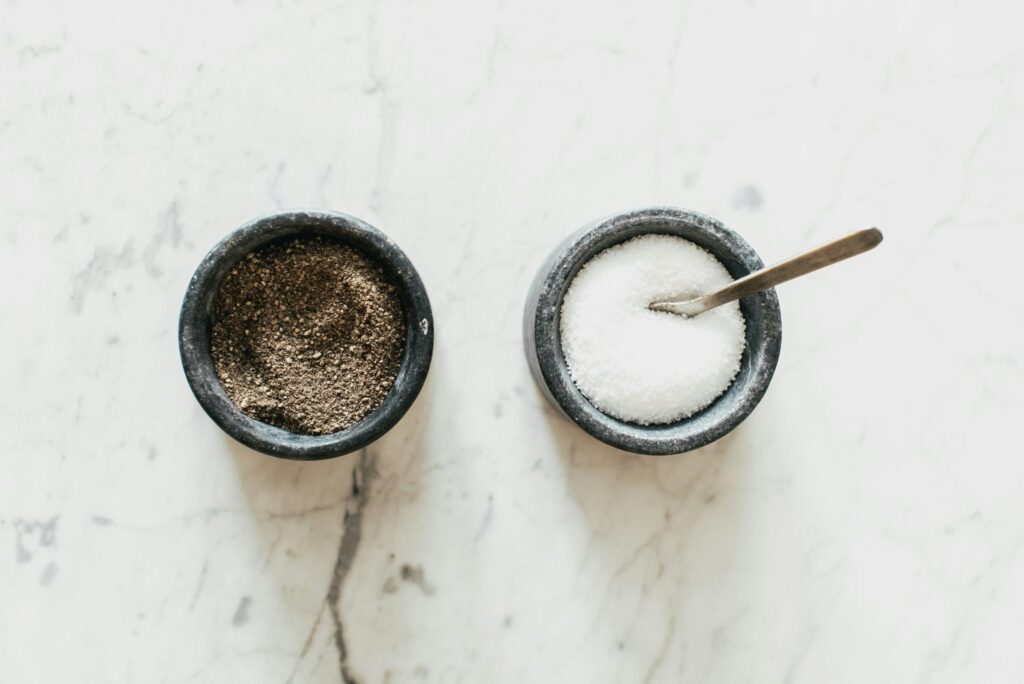Chorizo Feta Braid
I buy sausages freely without thought for when or how they'll come into play. This recipe uses a couple of raw/uncured chorizo that had been hanging around in my freezer for a few months without purpose.

If you’ve ever finished cooking dinner only to realise the flavours feel flat, bland, or just not quite right, you’re not alone. One of the most common missteps among home cooks, especially those of us juggling dinner with a million other things, is underestimating how and when to use salt and pepper.
Are you a ‘quick shake of salt and pepper just before serving’ kinda person? What you may not realise is that timing really does matter when it comes to a ‘meh’ meal and ‘wow’ meal.
First up, salt. It’s more than just a finishing touch, it’s foundational. When you add salt at the beginning of cooking, especially when sautéing onions or browning meat, it helps draw out moisture and double down on a food’s natural flavour. Salting early gives the food time to absorb the salt and develop complexity as it cooks.
When you wait until the end of cooking to season, you’re essentially asking the salt to do all the heavy lifting at the last minute. Sure, you might get a salty top layer, but the depth and balance won’t be there. It’s like dressing a salad and only coating the top leaves – the rest misses out.
And here’s the rub, if you’re cooking something that will be reduced – like a sauce or soup – you need to factor in that reduction and therefore intensifying of flavour so you can’t go too hard too early. Rescuing an over salty dish is a fool’s mission. Better to avoid that altogether.
Side note: if your dish is too salty, you can try adding more volume (ie more vegetables/protein/water) to create more quantity but you may end up with a still too salty meal and more of it to boot. A squeeze of lemon juice may add a counterbalance of acidity, though it won’t actually lower the salt content. Dairy such as cream or yoghurt can work in the same manner.
Pepper is a bit of a different beast. It’s not just there for tradition’s sake, it actually plays a unique role. While salt enhances flavour, pepper excites it, literally. It is actually a mild irritant, which sounds bad, but that’s why it works. It stimulates saliva and increases blood flow to your taste buds, waking up your mouth and helping you better taste the food.
Each type brings something different to the table, so don’t be afraid to experiment. A few crushed pink peppercorns on grilled chicken, or a grind of white pepper in your next pumpkin soup, can completely change the flavour experience.
Of course, salt and pepper don’t exist in a vacuum. They’re just two players in the bigger game of balancing flavours. A truly delicious dish usually combines saltiness, sweetness, acidity, and a little bitterness or umami. Salt is what helps those other elements shine, while pepper adds interest and heat.
But here’s where it gets tricky: everyone’s palate is different. Some people are more sensitive to salt, especially if they’re watching their blood pressure. Others might love a peppery bite while someone else finds it overpowering.
The key is to taste and adjust as you go. Start early, season in layers, and keep checking in. If you’re cooking for a crowd, it’s often better to under-season slightly and let each person finish their plate to taste. A little bowl of sea salt or a pepper grinder on the table gives everyone control.
For many home cooks seasoning is often rushed or left to the last minute. But with just a bit more attention to when and how we add salt and pepper, we can transform simple meals into something much more satisfying.
And don’t stop at the basics. Explore the world of peppercorns for new flavours, new pairings, and a bit of fun along the way.
It’s not about being fancy. It’s about being thoughtful – and giving flavour the chance to shine. So next time you’re in the kitchen, remember: salt early, pepper wisely, and always, always taste as you go.
I buy sausages freely without thought for when or how they'll come into play. This recipe uses a couple of raw/uncured chorizo that had been hanging around in my freezer for a few months without purpose.
Some days cooking feels like a slog and you need a little something extra to make your meal sing. The good news is you don’t need to spend hours in the kitchen - or restaurant-grade equipment - to create that sense of “oof, that’s special.”
I couldn’t possibly count the number of fish cakes I’ve eaten in my lifetime. As kids, we ate these so many times over summer using up the endless flathead Dad would catch in the bay. He was happy to fish and we were happy to eat.